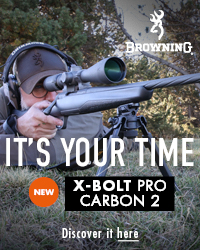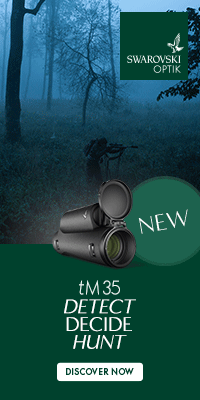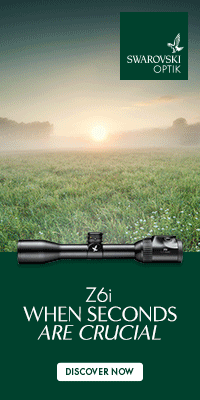2 Mile Kill Shot
- Details
- Tuesday, 05 September 2017
Toby Worthington looks at the recent action taken by Canadian Armed Forces in Iraq, during which a sniper killed an Isis fighter at 2 miles, breaking the former British army record.

(Above: The McMillan TAC-50 Sniper Rifle)
It is my experience that the appeal of many hobbies is not just the primary pursuit but also the equipment associated with the experience. Fisherman have an interest in their rods and reels, divers wets suits and BCD’s and rock climbers slings and ropes etc. So it is that most deer stalkers have a profound interest in rifles and calibres.
Perhaps it is for this reason that the above headline caught my eye. It reveals the extraordinary capabilities of the right person behind the right equipment.
In 2009 British Sniper Sergeant Craig Harrison of the Blues and Royals successfully shot two Taliban machine gunners in Afghanistan at the record breaking distance of 2,475m with an Accuracy International Rifle. To shed some light on the action Sgt Harrison wrote a book about the event called The Longest Kill.

However in June this year, Canadian Armed Forces confirmed that a special forces sniper shot dead an Islamic State fighter in Iraq at the staggering distance of 3,540 meters, thereby breaking the former British held record by more than 1000 metres.
Canadian Armed Forces said in a press statement: “The Canadian special operations command can confirm that a member of the Joint Task Force 2 (JTF2) successfully hit a target from 3,540 metres”. The claim was verified by video footage.
Unlike Sgt Harrison, who was using an Accuracy International AWM bolt action rifle in .338 Lapua Magnum, the weapon of choice used on this occasion was a McMillan TAC-50 sniper rifle.
Even with this type of weaponry the .50 calibre rifle was at the limits of its potential firing range. Whilst the precise details were not revealed, it seems that the sniper was working as part of a two-man team from a high-rise building, when the decision was made to take action in an attempt to break up an attack by Isis fighters against Iraqi security forces.
So just what does it take to place a killing shot at these types of ranges? Well undoubtedly a great deal of skill however, also required is a substantial amount of luck. Developed in the 1980’s the Mc Millan TAC 50 sniper rifle is the weapon of choice for the Canadian special forces and it is undoubtedly a fine piece of kit. The calibre employed in this weapon originates from a variant of the .50 Browning machine Gun (.50 BMG 12.7x99mm) however, even given this rounds huge potential, the variables that need to be calculated to achieve an accurately placed shot at this range can only realistically be controlled through some pretty serious calculations by the spotter in the two man team.
To give you some idea, one of the easier variables is bullet drop. In this scenario assuming a bullet weight of around 647 grains and an average day time temperature in Baghdad at that time of year of 30 Celsius, an altitude of 35 metres, (representing the top of the high-rise), along with average humidity of 21 per cent, the sniper would have to aim off 12,000 inches, or 327 arc-minutes of angle. To put that into perspective, you would have to aim at a point slightly higher than the ‘Shard’ to compensate for bullet drop. These variables are the easy ones. Windage is all but impossible, with the bullet being affected by differing wind speeds, eddies and gusts throughout the bullets trajectory. This is not-withstanding the fact that when out in the open and being shot at, the enemy have a frustrating tendancy to move around. An important point to consider when one appreciates that a bullet leaving the muzzle at 805 m/s (2641 ft/s) takes nearly 10 seconds to arrive at its target!
No matter how good the marksman, there are no doubt countless misses at ranges far shorter than this, of which we hear nothing. A freak event?....Undoubtedly. None the less for those of us who consider a long range shot to be 300 yards, the feat of striking a target the same size as a deer at ten times this distance is none the less remarkable.

Alternatively, Dr Simon Lee takes a look at How Much Gun is Too Much Gun





















